Duncan Green's Blog, page 187
June 10, 2014
Impressions of humanitarianism (based on last week’s trip to the Eastern Congo)
Blimey, that was hard work. Still recovering from a ‘getting to know the humanitarians’ visit to Eastern Congo last week, having my skeleton rearranged by bouncing around for hours on truly execrable roads, and my insides rearranged by some persistent DRC microbes (I’ll spare you the

credit: Louise Williams
details).
I’ve always worked on the long term development and advocacy side of development, so this was something of a belated induction trip to see our humanitarian work on conflict, refugees and displaced people. (Overall, humanitarian makes up 36% of Oxfam GB’s total spending (compared to 43% on long term development and 5% on campaigns.)
Here are a few semi-newbie impressions.
Roads are a window on the state: To get to Goma, you fly to another country (Rwandan capital of Kigali), then zoom for 3 hours to the border along Rwanda’s flawless roads. At that point you enter another world, stepping from state effectiveness to state dysfunction – most immediately encapsulated by the roads: in the DRC, a 40km journey takes 3 hours. But first you have to get past being checked out by the security guard peering through the extremely weird mural on the Oxfam gate (see right).
The Humanitarian Machine: It’s big (Oxfam spends approx $12m a year in North Kivu province alone), and organized to minimize risk. Every vehicle movement must be radioed in for approval before setting off; there are strict and constantly updated guidelines for when/where you can go either on foot or by car.
It prefers bounded, simple systems, so spending on Internally Displaced People (IDP) largely goes to purpose built IDP camps scattered across North Kivu – depressing communities of thousands of tiny huts – white tarpaulins stretched over straw and wood, crammed together on whatever land can be found. Yet the camps only get 30% of the region’s estimated million IDPs. The rest are somehow accommodated by ‘host communities’, who are already poor, and now come under even greater pressure from new arrivals. Amazingly, at least in the places we visited, there seems to be very little conflict between IDPs and hosts (many of whom were themselves previously displaced).
It’s got an awful lot of players: the IDP camps we visited were not particularly surprised at our arrival – they (well, at least the relatively accessible ones) receive a daily procession of visitors, leaving long lists of names in the visitors’ book. It’s a miniature version of what we criticise among big donors – too many visits sucking up administrative time, proliferation of reporting, overlapping mandates. A colossal timesuck (to which I of course contributed!) What if we took the value of all of that, and just turned it into cash transfers (as Chris Blattman recently suggested as the baseline for any development intervention)?
It’s (still) incredibly short term: time horizons of a year or less for funding mean staff constantly scrambling for the next grant. There are a few exceptions – for example, DFID is funding a £10m, 4 year Water, Sanitation and Health programme, which allows us to build long term work with the government, strengthening, rather than bypassing, the role of the state. I’m interested in any other examples of such ‘good donorship’, in terms of lengthening the time horizon for humanitarian work – if you’ve got any, please send me details.

Credit: Maxime Michel
There’s a thin layer of expats alongside (and often in charge of) a larger group of often brilliant, committed and far more knowledgeable local staff, for whom helping people in the direst of circumstances more than makes up for the gruelling, often traumatic nature of the work. As John Kanani (left, with some weird looking white bloke), an upbeat Congolese water engineer with 20 years working for Oxfam around the world puts it: ‘you know if you succeed or fail – that’s what makes you keep going.’ Given the doubt and agonizing that characterises long term development and advocacy, I envied him.
Spending time with humanitarians reminds me of hanging around with foreign correspondents in Central America and elsewhere. Exchanges of anecdotes pass for conversation, with a strong undertone of competition (but humanitarians tend to listen to each other’s stories, rather than just waiting for the chance to tell their own). The endless talk of money (fund raising for humanitarians, expenses for journos). A tendency towards four Yorkshiremen-style one-upmanship: ‘call that a conflict?’. And of course a shared contempt and irritation with head office, with its pen pushers, bean counters and know-nothing ‘advisers’ (oops, I guess that’s me).
It’s not pious – people know how to party. I spent a surreal evening at an ex pat quiz night in Goma’s ‘Riviera Club’. Four wheel drives parked nose to tail outside a bar stuffed full of young expats (20s and 30s). Quiz questions on Eurovision, breeds of dog, Monty Python. (We came 3rd, but really screwed up on Eurovision). Congolese staff had better things to do that night, but are themselves great raconteurs and party animals.
But beyond the adrenalin, the sacrifice and the rewards, humanitarians acknowledge the system’s failings (fragmentation, short-termism) and the need to do things differently, for example how to make the system work in ‘emergencies’ that last for 20 years (as the DRC’s has) and what is its relationship with the state. I’ll discuss these in blogs over the next few days.

June 9, 2014
Links I liked
Random World Cup bit: With their profession’s legendary record on prediction, The Economist forecasts the winners
Good Health; Bad Health:
Great overview of the Universal Health Coverage debate/new research from the ODI’s Kevin Watkins
2.1 billion people (30% of the global population) are now obese or overweight. 2/3 of the obese live in developing countries [h/t William Moseley]
It’s like Uganda Herbalife, only way, way more evil… [h/t Campaign for Boring Development]
Where’s the global drive for Tobacco Control?
Other stuff:
Showing Ethiopians an inspirational documentary changes their attitudes to education, savings etc [h/t Rakesh Rajani]
Sexism kills: because people don’t respect them, study finds
The Weekly Piketty:
The backlash against Piketty was inevitable; that it would be led by the Financial Times wasn’t:
The FT has “damaged its brand” by its treatment of the French wizard [h/t Owen Barder]
Paul Krugman delivers a smart smackdown of the ‘doubt is our product’ crew
All the Piketty reviews you ever wanted… (and some you didn’t) y en español [h/t Branko Milanovic]
Nepotism niche: Another great Plan International video from my sister in law, Mary Matheson. This one is on girls’ education ahead of the Global Partnership for Education pledging conference later this month

June 8, 2014
20 million food parcels (and counting): what explains rising food poverty in the UK?
Oxfam works on poverty in the UK as well as elsewhere, and is pretty alarmed at what it is facing there. Here Krisnah Poinasamy, Economic Justice  Policy Adviser for our UK programme, introduces a new report on hunger in the UK.
Policy Adviser for our UK programme, introduces a new report on hunger in the UK.
Today, Oxfam and its partners released Below The Breadline, a shocking report, which estimates that 20 million meals were given out by three main food aid charities in the UK in 2013/14, up from 13 million in 2012/13. Voluntary organisations are stepping in to address hunger in the seventh richest country in the world. Alongside the proud cries of ‘it shouldn’t happen here’, should sit a broader question: will we ever see the end of hunger?
Before we pack our bags for the defeatist train, it’s worth bearing in mind the tremendous global progress on hunger in the past seventy years. Recently, I had the pleasure of hearing the Oxford Martin School’s Professor Charles Godfray present some of the solutions to sustainably and equitably feed a world of 9-10 billion people. Godfray noted how developed economies, especially the UK and US, have never spent less on food as a share of the country’s total disposable income. While this may be evidence of advances in more efficient production, it highlights the fact that just producing more food is not really the issue, distribution is. Globally, over 2 billion people are overweight or obese, and 2/3 of the obese live in developing countries – it is becoming clear that the problem is an unjust food system that overfeeds some and underfeeds others, often in the same countries.
Social protection on its last legs
In the UK, there are currently 13 million people – one in five – living in relative poverty, i.e. below 60 percent of median income. The immediate driver behind the phenomenal growth of food poverty in the UK is a social protection system that is no longer fit for purpose. Social protection in the UK has seen a significant increase in the use of sanctions, depriving people of government support for a minimum of a month, and a maximum of three years. Evidence of the sanction regime’s failure is apparent in the 58 percent of sanctions that were successfully challenged last year (and 87 percent in the three months to September 2013). In their place, voluntary sector food banks are plugging the gaps in the safety net.
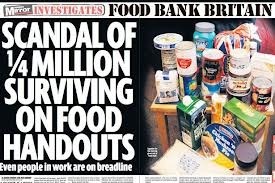 Sanctions are not the only source of suffering. Basic support for working couples has barely risen since the 1970s, despite increases in average earnings. More recently, the age of austerity has abolished sensible solutions, such as crisis loans when payments have been delayed. Unsurprisingly, delays to payments are another driver of food bank use.
Sanctions are not the only source of suffering. Basic support for working couples has barely risen since the 1970s, despite increases in average earnings. More recently, the age of austerity has abolished sensible solutions, such as crisis loans when payments have been delayed. Unsurprisingly, delays to payments are another driver of food bank use.
Falling incomes
Social protection has been the target of severe cuts in the past three years, with 1.75 million of the poorest families in the UK facing an absolute cut in their income. Significant, additional cuts to social protection are being planned by the current government over 2015-20. Such cuts are occurring despite the poorest fifth having already seen their disposable income fall by 11 percent, £936 a year, in real terms over the period 2005-12. In other words, the poorest are living on £18 a week less, even though energy bills rose by 37 percent between 2010 and 2013 and food prices by 44 percent in the eight years to 2013. So £18 less a week really hurts family budgets that were already at breaking point. These kinds of changes leave people with little money to buy food, forcing them to join the queues at the food banks.
The fall in incomes for the poorest has also been caused by a lack of decent work. The growth of vulnerable employment around the world has been mirrored in the UK, with the much celebrated falls in unemployment often driven by a rise in self-employment and increase in insecure, zero hours contracts. Since 2009, the number of people earning less than a living wage has increased 40 percent to 4.8 million and the UK minimum wage has fallen in real terms. Low wages and insecure work have forced increasing numbers of working people to turn to food banks.
UK households, on average, are buying less food yet spending more money. Comparing 2007 and 2012, those in the bottom income decile spent 22 percent more on food to buy 5.7 percent less. As Godfray highlighted in his presentation, the impact of the 2008 food price hike has been far greater among communities in sub Saharan Africa than in the global North. Nevertheless, it is the poorest around the world who are feeling the impact of food price increases most keenly.
The bigger picture
Cutting through the detail, these drivers are part of a bigger, long-run picture in which people in poverty are increasingly demonized by the media, 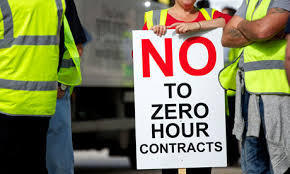 powerless in the workplace and voiceless on the political stage. This has both driven and underpinned further policy decisions to marginalise the poorest. At the roots of the problem is inequality, which seen the poorest 1.75 million driven deeper into poverty at the same time as the 1000 wealthiest individuals and families saw their fortunes increase by 15 percent to £520bn (equivalent to a third of UK GDP).
powerless in the workplace and voiceless on the political stage. This has both driven and underpinned further policy decisions to marginalise the poorest. At the roots of the problem is inequality, which seen the poorest 1.75 million driven deeper into poverty at the same time as the 1000 wealthiest individuals and families saw their fortunes increase by 15 percent to £520bn (equivalent to a third of UK GDP).
What can be done?
While country contexts will vary, the rise and fall of the UK’s welfare state should provide a warning to countries with younger and emergent social protection systems. Developing a system that provides universal support for those who have fallen on hard times requires constant vigilance in guarding against it being dismantled by the wealthiest and most powerful, as seems now to be happening in the UK.
Thomas Piketty’s Capital in the 21st Century has shone a light on one of the key drivers of power and political capture – wealth inequality. Ideas like the Land Value Tax could both tackle inequality and provide a sustainable source for a UK social protection system. These are ideas that could have incredible importance for less mature taxation systems and ensure that wealth inequality does not become be entrenched.
Until we recognise the drivers of wealth inequality at the top, we are likely to continue to make false justifications for hunger and suffering at the bottom.

June 5, 2014
Jamie Love’s Next Big Idea: Making the WTO into a force for good in Public Health
I’ve heard the name Jamie Love mentioned in reverential tones over the years, and a few weeks ago, I was asked by STOPAIDS to interview him in an ‘in  conversation’ format in front of a small group of activists. It was fantastic fun (for me at least).
conversation’ format in front of a small group of activists. It was fantastic fun (for me at least).
Jamie is director of Knowledge Ecology International and is known as perhaps the world’s leading activist and policy entrepreneur on reforming the rules governing research and development (R&D) for medicines and medical technologies and the role of intellectual property (IP, more of that later), but I started off asking him about his ‘moment of conversion’ – when did he decide to become an activist?
As often happens, the answer was pretty surprising. As an 18 year old Nixon Republican, Jamie headed off on a romantic quest to work in a fishing cannery in Alaska. He found himself the only white boy among Filipino migrants in a semi-apartheid system, in which the Filipinos were banned from operating cranes or going into town unaccompanied, and women were paid less than men. He got radicalized, ended up giving evidence in a Department of Justice investigation, and then started a non-profit free medical clinic/advice centre for the unemployed in Anchorage.
Fast forward 45 years and what is he most proud of? He dashed off some extraordinary wins – working with Ralph Nader to win public access to key US government databases in the 90s, then getting involved in IP, working with a coalition of activist groups like MSF to launch a global campaign for compulsory licensing of patents on AIDS medicines. His work included
Negotiating with CIPLA, an Indian generics firm, a $1 a day price for AIDS treatments
The Doha declaration on TRIPS and Public Health
An innovative ‘patent pool’ system to encourage drugs R&D in neglected tropical. For example UNITAID created a Medicine Patent Pool, to which big Pharma licenses HIV medicines , and which in turn sublicenses to generic companies, thereby enhancing competition
With the World Blind Union, developing a proposal for a treaty on copyright exceptions for blind people – the first human rights-related treaty on IP. The treaty was agreed in 2013 and over 50 countries have signed up including the US.
 At 65, his drive is unabated. His next big idea (he doesn’t do small ones) is to try and find a way to revive the public R&D system for new drugs, which in recent decades has been squeezed out by funding cuts, IP and Big Pharma.
At 65, his drive is unabated. His next big idea (he doesn’t do small ones) is to try and find a way to revive the public R&D system for new drugs, which in recent decades has been squeezed out by funding cuts, IP and Big Pharma.
To reverse this, he is dusting off a 2009 proposal for a new WTO Agreement on the Supply of Public Goods (ASPG) (it got sidelined by all the interest in the Treaty on the Blind Union). Here’s what he said at the meeting:
‘The WTO was set up to promote trade in private goods and services. To do this, it created a dispute resolution mechanism (DRM) far more serious than any human rights agreement.
The architectural model for the ASPG is the Global Agreement on Trade in Services (GATS): countries table their promises, either individually or as groups. They then negotiate with other countries about their promises. Once the promises are agreed, they becomes binding, and subject to the DRM.
So for example, a country could offer to fund R&D into tuberculosis drugs, or pledge cash for the Global Fund, or regulatory reform (access to information on drug trials, or exemptions on patents for neglected diseases).’
According to Love, the US and UK governments both like it, (he hasn’t talked to China yet) – he has yet to find any opposition. The GATS system of request and offer would both add teeth (via the DRM) to the kind of promises leaders love to bandy about at international summits (and then escape without sanction when they break them) and avoid the attempt to negotiate a single overarching treaty of everything, which has got so stuck in the current Doha round of trade talks.
What do you think of the idea? As he spoke, I could feel the policy wonk ‘yes buts’ welling up. Yes, but do we really want to make the WTO even more

Really?
powerful? Yes, but surely, countries are never going to start talks on a new agreement when the Doha Round has been such a disaster? Yes, but would government really invoke the DRM on another government’s failure to pursue public interest goals?
But that’s just me picking nits – Jamie Love is a visionary policy entrepreneur, pushing out big ideas at an astonishing rate (he really ought to patent them…..) Even more astonishing is the number of them that end up being adopted in some form. I wouldn’t bet against seeing something on this in the WTO ten years down the line. It might even end up salvaging its battered reputation.

June 4, 2014
Help yourself: How do poor women and men understand their right to food?
Naomi Hossain of IDS introduces the latest report (launched today) from a joint IDS/Oxfam research programme on food prices.

Do people at risk of hunger think they have a right to food? What does a right to food mean, and how can it be claimed and enforced? We asked these questions of around 1500 people in our Life in a Time of Food Price Volatility research project in 2013, an ongoing exercise in 10 low and middle income countries funded by the UK Government and Irish Aid.
The responses were surprising: despite all the talk at international conferences, the shining examples of Brazil’s fome zero and India’s Right to Food Act, and the NGO campaigns, there is a big gap in advocacy and basic information about rights for right-holders themselves. Across our 23 research sites, the sense of a formal, legal right to food was generally weak. People tend to think they have a legally enforceable right to food mainly when their government has recently, explicitly, claimed this responsibility. Then much depends on the willingness and ability of governments to act. In Kenya, campaigning and advocacy around the new 2010 constitution mean people are well-informed of their right to food – at least in theory. In Nairobi, Mr M, a 37 year old craftsman, said
Yes, I do know that hungry people do have rights to food as stipulated by the constitution. But we do not know [from] whom we should claim these rights.
The reality can be demoralising. Mrs C, a farmer in the drought-stricken coastal region of Lango Baya in Kenya, told us
No, I do not think hungry people like me have any rights. Late last year a meeting was called by the Chief. The meeting we were told was aimed at helping people who are HIV positive and the elderly receive assistance. We were told we needed to apply. We did, we even wrote down our numbers, but since then we have never been called or assistance brought for us. I am very bitter, because they should have just told us that they were no assistance coming instead of raising our hopes on something that was not there. They lied to us.
We called this year’s research report Help Yourself because for most people in most places, the right to food seems less a legal relationship between states and citizens than a DIY right – a matter for individuals, families and, at most, local communities. People think they have such a right but it is because this seems a natural notion related to the basics of survival and the minimum mutual support that makes up a community.
 Even people at risk of hunger do not expect to be fed or given hand-outs – they talk instead of the right to work to feed themselves. They expect policies that make agricultural inputs and food affordable, and that ensure that work is available and pays enough to cover living costs. Mrs H, a 34 year old domestic worker in Dhaka echoed her Bangladeshi compatriots when she said:
Even people at risk of hunger do not expect to be fed or given hand-outs – they talk instead of the right to work to feed themselves. They expect policies that make agricultural inputs and food affordable, and that ensure that work is available and pays enough to cover living costs. Mrs H, a 34 year old domestic worker in Dhaka echoed her Bangladeshi compatriots when she said:
Allah did not say that you keep sleeping the whole day and when you rise I will feed you. Will it work if you keep shouting for rights when Allah himself is giving the direction to work for food?
Many people seem to fear being labelled ‘lazy’ if they state their claim to a right to food. Yet they also recognise that disasters or misfortunes, and being too young, old, frail or otherwise unable to work means depending on others. Then too, people look to churches, mosques, or neighbours rather than expecting the state to act, even though local institutions and individuals are themselves over-stretched.
In Chikwanda in northern Zambia, 50 year old Mr P uses crutches after childhood polio, and works as an agricultural piece-worker. He heard about his right to food on Mpika FM radio but doesn’t expect much from the government. Times are so tough for Mr P that he relies reluctantly on rodents for his protein these days – nobody in his community has helped take him to places where he thinks he might get help with fertilizer or food.
As Bolivian participants told us about their experience of organising around rights, people have to help themselves if the right to food is going to mean anything other than theoretical legislation. This means organising to claim their rights. In many different settings democracy was seen as a means of enforcing a right to food, and votes as a referendum on government performance on food security. But a step is missing: people need to be organised to claim their rights if their votes are to translate into action. And for that to happen, they first need to know that those rights exist. As former UN Special Rapporteur on the Right to Food, Olivier de Schutter, argues, ‘[p]eople need to know their rights in order to be able to demand change and accountability from the Government’.

June 3, 2014
Is Brazil’s social/economic miracle running out of steam just as the World Cup arrives?
Is Brazil’s shambolic preparation for the World Cup a symptom of a deeper malaise? Oxfam researcher Katherine Trebeck (@ktrebeck) reflects on a recent visit
I bandy about the term ‘economic model’ quite a lot, usually prefaced by the word ‘broken’ in reference to the UK’s purported economic recovery.
But the UK is not alone in meriting a derogatory descriptor. In a recent trip to Brazil I heard people talk of Brazil’s economic model as ‘unsustainable’, ‘exhausted’, and ‘full of tensions’.
Brazil is certainly talking a good game – the government regularly hosts delegations of people wanting to learn more about Bolsa Familia, one of the largest welfare mechanisms in the world. It combines cash transfers with conditionality. Brazil’s 1988 constitution affirmed an array of social rights and poverty is certainly on the political agenda in a way that should make other countries ashamed. Officials are rightly proud of Brazil’s achievements to date in reducing inequality and heading towards eradication of hunger.
On the environmental front Brazil is receiving accolades for protecting the Amazon and using hydropower to fuel its growing economy. And people looking for examples of new democratic spaces often cite Brazil’s Public Prosecutor’s Office (which acts as a ‘fourth power’ or ombudsman); the councils and conferences (some of which come with decision making power and budget responsibility); and, somewhat inevitably, participatory budgeting.
But the extent to which Brazil’s hype merits all this attention is debatable when deep inequalities remain (still twice the OECD average in terms of income and even worse in terms of entrenched inequalities of wealth) and when large tracts of land are held by just a few powerful families (Brazil has the greatest land concentration in the world).
Brazil is going through a ‘reprimarisation’ as primary sectors grow with Brazil’s globalisation and increasing sales to China and India. But this has meant that other interests (including those of indigenous communities) are forced to make way for expanding oil extraction, big agribusiness and other ‘mega projects’ such as dams and mining. The environment seems rarely protected – an official from an international agency told me that after the Rio+20 conference ‘everyone forgot about the environment’. And deforestation rates are reportedly increasing again.
 Yes Brazil has achieved admirable and impressive reductions of income inequality (in no small part due to programmes like Bolsa Familia, but also, and more substantively, increases in the minimum wage, pensions and formalisation of the economy). Yet government officials seem reluctant to talk about wealth inequality – perhaps because this would entail challenging vested interests and powerful players (land concentration has increased in the last decade). The rich benefit from exemptions and many evade tax. Race pervades inequalities: the average income of white people is almost twice that of Afro-Brazilians and there are large gaps in life expectancy.
Yes Brazil has achieved admirable and impressive reductions of income inequality (in no small part due to programmes like Bolsa Familia, but also, and more substantively, increases in the minimum wage, pensions and formalisation of the economy). Yet government officials seem reluctant to talk about wealth inequality – perhaps because this would entail challenging vested interests and powerful players (land concentration has increased in the last decade). The rich benefit from exemptions and many evade tax. Race pervades inequalities: the average income of white people is almost twice that of Afro-Brazilians and there are large gaps in life expectancy.
Brazil’s social model is narrow and focuses on basic needs. It is confined to pursuit of a buccaneering economy from which some money can be diverted to social programmes. People seem more interested in being consumers rather than citizens (there are even shopaholics groups forming!). Consumption is seen by the more powerful ministries as the driver of the economy: competition and attraction of capital is the goal.
The Mayor of Sao Paulo, Fernando Haddad, has observed: ‘stepping from the street into your house, a lot has improved in our country; but stepping from your house to the street, nothing has been done’.
The education and health sectors are increasingly subject to privatisation, with middle classes purchasing healthcare and schooling. This risks leaving a rump of underfunded public services: the poor quality (and expense) of state-provided health and education was a key factor in large protests in 2013 (calling for, inter alia, ‘FIFA standard education and health’).
The innovation of the Public Prosecutor’s Office seems broadly welcome, but people warn of a ‘judicialisation’ of social problems. People I spoke to are cynical about the potential of participatory budgeting to be genuinely transformative (and activists say decisions that go against government policy or powerful economic interests are not adopted). There are warnings that democratic structures have ‘run out of steam’ as political capture and patrimony persists, the extreme right gains in power and Congress remains dominated by agribusiness and evangelical conservative MPs. And while the poorest households have larger share of national income than before, this hasn’t translated into greater political voice.
And of course there is the violence. Almost 50,000 people die every year due to homicide and violence. Some campaigners have been murdered for  speaking out about rights of rural communities and domestic violence is widespread: a woman is battered about every 24 seconds.
speaking out about rights of rural communities and domestic violence is widespread: a woman is battered about every 24 seconds.
Such contradictions are mirrored by tensions amongst social justice campaigners: between those who defend Brazil’s ‘neodevelopmentalist’ model because it pays for undeniably important social technologies and those who worry that this is merely defending crumbs from a broken system. It is likely that Brazil’s successful policies and inventions are being undermined by structural problems – increases in minimum wages and cash transfers will never be enough when structural reform, progressive fiscal changes and land reform is so urgently needed. Being realised in the face of bigger challenges, Brazil’s achievements to date seem akin to running up the down escalator.
And here’s last year’s viral protest video ‘No, I’m not going to the World Cup’

June 2, 2014
Bill Easterly’s new book: brilliant on technocrats, flawed on rights, wrong on aid and hopeless on China
This review first appeared in the June issue of the IMF’s Finance and Development magazine.
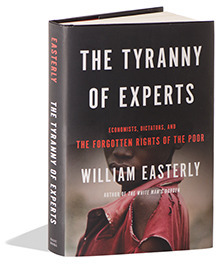
I loved the premise and conclusions of William Easterly’s new book. The intervening 300 pages gave less cause for celebration.
Easterly sees development as hijacked by technocrats: “The technocratic illusion is that poverty results from a shortage of expertise, whereas poverty is really about a shortage of rights.” The founding of the World Bank is the moment of original sin (the IMF gets off lightly). The resulting polemic is sweetly written, packed with fascinating human interest stories to bring alive what could have been dry conceptual debates.
For Easterly, the individual is hero, either unleashed to transform the world or confounded by the malignity of politicians. It is a quintessentially American, even Hollywood, take on the human condition. His view of power is summed up in the title of the chapter on institutions: “We oppress them if we can.”
Easterly’s gurus are Adam Smith and Friedrich Hayek; he reserves his scorn for development economists like Gunnar Myrdal and W. Arthur Lewis, who created a special economics that discarded free choice and individualism.
The book contains thought-provoking accounts of the origins of the technocratic approach, which Easterly dates to 1919 (not Truman’s 1949 speech, customarily cited as the dawn of aid). He sees it as rooted in attempts to divert attention away from the rights agenda, whether over U.S. anti-Chinese discrimination in the 1920s and 30s, Britain’s attempts to resist postwar decolonization, or the struggles over civil rights in the 1950s and 60s. He traces a direct lineage to more recent wars (Cold; on Terror; on Drugs), where a focus on technocratic development enabled a convenient blind eye to be turned when rights violators lined up on the West’s side.
This readiness to forget rights was music to the ears of dictators of all stripes, who grabbed the planner approach (or at least its language) as a way to ignore the opposition and consolidate their own economic and political power. He sees this abandonment of individual rights as the “moral tragedy of development today.”
 There is much to agree with here: his criticism of the blank slate approach, which ignores national and local specificities; the abuse of individual rights in the name of some higher national purpose; and the efficacy of spontaneous solutions rather than conscious design (neatly equating planners with anti-evolutionists).
There is much to agree with here: his criticism of the blank slate approach, which ignores national and local specificities; the abuse of individual rights in the name of some higher national purpose; and the efficacy of spontaneous solutions rather than conscious design (neatly equating planners with anti-evolutionists).
Easterly even comes out as a growth skeptic: “If there is one number to which the rights of millions will be happily sacrificed, it is the national GDP growth rate.”
But his argument founders on the China (or more broadly east Asia) question. Confronted with the historic reality that high-speed growth in east Asia has taken place under a variety of autocratic systems (the so-called developmental states), advocates of the American Dream confront two options: either accept that there may be trade-offs between growth and rights or try to explain away the east Asian miracle as a triumph for individual rights and market forces.
The World Bank attempted the latter with its much-derided East Asian Miracle of 1993, but Easterly makes that exercise in spin look positively timid: “There is more evidence for attributing the rise of China as an economic superpower to the anonymous spread of the potato than to Deng Xiaoping’s economic policies.” This is desperate stuff.
By entering the terrain of rights, he expands on his earlier book, The White Man’s Burden, which put forward a distinction between searchers and planners—a dichotomy I have found very useful over the years. But his grasp of rights is selective and flawed. For Easterly, rights are always individual, never collective—no mention of trade unions, women’s or indigenous movements, or producer organizations.
Moreover, this portrayal of heroic individuals struggling for rights draws extensively on U.S. history, but completely ignores the institution that in  recent years has done more than any other to promote human rights: the United Nations. That those contemptible planners and bureaucrats in New York should be advancing rights for all sorts of marginalized groups around the world clearly contradicts the premise, so they must be airbrushed out of the picture.
recent years has done more than any other to promote human rights: the United Nations. That those contemptible planners and bureaucrats in New York should be advancing rights for all sorts of marginalized groups around the world clearly contradicts the premise, so they must be airbrushed out of the picture.
Finally, Easterly’s conclusion is that if you care about rights, you should oppose aid. Mine is the opposite. Done well, aid can support poor people’s struggles (individual and collective) for their rights, something I have seen firsthand in numerous countries in my work for Oxfam.
If you want to dig deeper, here’s Bill Easterly defending his critique of aid against Owen Barder and links to some of the other reviews and blog coverage (it’s generated quite a bit, haven’t had time to check if these links are just to the positive ones, but surely Bill wouldn’t let anyone mess with the data like that?)
https://www.youtube.com/watch?wmode=t...” width=”WIDTH” height=”HEIGHT” >

June 1, 2014
Building women’s leadership in the most difficult places (Pakistan) – case study for your comments
Next in the series of draft case studies on active citizenship, some fascinating work on women’s empowerment in Pakistan. Any comments on this draft paper (RHV Pakistan consultation draft) greatly appreciated.
Well known for its highly articulate and influential women, Pakistan is also notorious for the severe restrictions placed on women’s personal and political liberties.
The Raising Her Voice (RHV) programme entered this very complex and sensitive issue by building a country level partnership with the Aurat 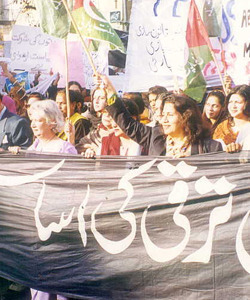 Foundation (AF), which for the past 26 years has promoted women’s empowerment and citizens’ participation in governance. Working together, the RHV programme and AF established Women Leaders Groups (WLGs) in 30 districts across Pakistan.
Foundation (AF), which for the past 26 years has promoted women’s empowerment and citizens’ participation in governance. Working together, the RHV programme and AF established Women Leaders Groups (WLGs) in 30 districts across Pakistan.
In each WLG, 50 women, representing different political parties and with affiliations to a broad cross-section of community and civil society organizations (CSOs), came together for the first time to develop mutual trust and strengthen their collective voice. The WLGs are influential in their communities and have high levels of confidence and well-developed networks. Despite their ideological and party political differences, the women leaders see eye to eye on many women’s rights issues. They are able to work together to resolve local problems, such as violations of women’s employment rights and cases of domestic violence.
At the national level WLGs, in consultation with CACs and other community organizations, were the driving force behind the creation of a Women’s Manifesto for political parties. Ninety WLG members ran for political office in the 2013 election.
At the district and community level, WLGs have become powerful pressure groups. Whether advocating for the resolution of cases of sexual abuse in local schools, or custody rights and the right to a dowry after a marriage breakdown following physical abuse. Gaining strength and finding safety in numbers, they have challenged exclusively male arbitration bodies, which traditionally decide the fate – which can sometimes mean death – of women and girls in family disputes. In the political sphere too, their impact has been tangible. 31% of WLG members surveyed indicated that political changes had occurred with substantial anecdotal evidence of individuals in Departments receiving them respectfully and taking them seriously
Theory of Change
RHV began with a power analysis, examining the nature and origins of women’s exclusion and subordination in governance structures (both formal and informal), systems of justice (ditto), violence and public services.
The analysis identified two key drivers of change: allies and windows of opportunity.
Allies: As well as its work with women’s leaders at community level, AF’s wider networks make it able to broker a broad range of alliances among Pakistan’s vibrant civil society movement and beyond, including the judiciary, social ministry officials, private sector, banks, media and faith organizations, as well as traditional decision-making structures such as panchayats.
Legislative windows of opportunity for work on women’s rights were opened up by the 18th Constitutional Amendment (2010), which enshrined the right to information, education for girls and boys, and a fair trial, and prohibited discrimination based on sex. Other processes such as administrative decentralization and the introduction of quotas for women parliamentarians also created new pathways to progress.
AF adopts a non-confrontational approach to avoid women, or their advocates, being exposed to greater levels of violence or having their already narrow political space being closed down completely.
 Pakistan’s cultural and religious barriers to women’s empowerment make it very hard to overtly organize women in public. But women can still talk to women in ways that outsiders – and most men – simply can’t, so RHV’s vehicle of choice has been WLGs. The women in them are mainly educated, some with party political connections, but an increasing number are poor.
Pakistan’s cultural and religious barriers to women’s empowerment make it very hard to overtly organize women in public. But women can still talk to women in ways that outsiders – and most men – simply can’t, so RHV’s vehicle of choice has been WLGs. The women in them are mainly educated, some with party political connections, but an increasing number are poor.
AF supports WLGs through training, exchange visits and information sharing. WLGs have organized themselves into thematic sub-groups focusing on education, health, legal rights and social networking. WLGs’ informal directories of members’ skills and contacts, and formal directories of local service providers and assistance to support referrals are highly valued by women leaders. The multiplier effect of contacts and information increases the potential for support and influence, and safety in numbers reduces the risk of individuals being threatened with violence.
Central to RHV’s impact has been replacing isolation with networks: horizontal networking has helped to bring large numbers of women and men out in public for campaigns and protests, and to resolve specific problems, while ‘upward’ networking helps to link the WLGs with political actors and Government officials.
RHV works across three ‘spheres’:
Personal: both in terms of supporting the personal confidence and development of women leaders, and then helping them to do likewise for larger groups of poor and marginalized women in their constituencies.
AF has helped WLG members travel to observe women members of the provincial assemblies in action, as they challenge senior government officials and civil servants. Moreover, as ‘community women’ gain in confidence and become more articulate, the assumptions made by ‘upper echelon’ women about the priorities of their ‘village sisters’ have also been challenged.
Helping poor and marginalized women build their ‘power within’ in Pakistan starts with the basics. WLG participation in the national identity cards registration campaign was a critical first step to developing and deepening the political identity and voice of women in their communities. ID cards also enable women to register for social assistance or micro finance schemes.
Social: As well as an explicit aim to build women’s collective action, AF’s work in the social sphere primarily focused on creating an ‘enabling environment’ for women’s political participation and leadership, allowing WLGs to respond flexibly to events. They have done this with enthusiasm, responding to floods, violence, politics and labour disputes in different ways.
Political: The work of the RHV Pakistan programme has contributed to the passing of groundbreaking legislation concerning women. This has included pushing for the approval of the Domestic Violence Bill, where AF has collaborated with, and often been the hub for, a network of alliances.
A large window of opportunity (and test of RHV’s impact) came in the months leading up to the May 2013 elections. WLGs, in consultation with other community organizations, developed a manifesto listing the minimum acceptable requirements of political party engagement on women’s empowerment. The manifesto and accompanying campaign reached both national media and inner circles of influence, achieving a high level of ‘buy in’ from political parties, and enabling WLG members to hold them to account:
Conclusion? RHV in Pakistan shows what can be achieved in even the most apparently unpromising of contexts. This is due both to the commitment, experience and expertise of the Aurat Foundation, and to the design of the programme. By focussing on women leaders, many with existing experience of how to influence local decision-making, it found a viable point of entry for working on gender issues. By establishing an enabling environment based on building confidence, knowledge, skills and networks among women leaders with strong local legitimacy, rather than specific programme ‘blueprints’, it allowed WLGs to respond to the shifting tides of Pakistani life and politics.
And here’s a particularly inspiring example of the kind of women getting involved – former bonded labourer Veeru Kohli on the campaign trail in last year’s elections

May 29, 2014
When is redistribution popular? When people first see social conflict rising, apparently. Useful new research.
This recent ODI paper by Laura Rodriguez Takeuchi made my head hurt (heavy on methodology, light on narrative, for my taste) but I think it’s worth persevering with.
Analysing perception data for over 15,000 individuals in 40 countries, it arrives at two main findings:
1. Perceptions of social conflict have a strong influence on people’s demand for redistribution, even stronger than the effect of perceptions of fairness and social mobility.
2. However, the effects seem to be stronger at lower levels of inequality and in countries with lower social conflict, suggesting that people may adapt to

Time to change the system?
higher inequality and adjust their demand to redistribution accordingly.
Its policy conclusion?
Governments and policy-makers interested in acting upon inequality need to act quickly when inequality is starting to rise in order to capitalise the support towards redistributive policies.
The first conclusion makes sense. After all, it’s pretty clear that conflict in general is a driver of change, and some big exercises in redistribution came out of domestic civil unrest rather than war or economic crisis (Malaysia after race riots in 1969, Sweden after massive labour unrest in the 1920s).
But the finding that conflict matters more than unfairness in creating public demand for redistribution raises important questions for campaigners. It may be that merely highlighting injustice, e.g. declining social mobility, does not disrupt the political and economic system sufficiently to allow a redistributive political coalition to form. I’m not suggesting that we start promoting social conflict – there is a role for more peaceful activism in building awareness both on problems and solutions. But we may have to wait for social conflict to come along as a catalyst, before all that hard work pays off. And it’s one more argument for campaigners to be embedded in national politics so that they quickly identify and respond to looming conflicts as windows of opportunity.
 I don’t know what to make of the second bullet, which seems to be a boiling frog argument – people respond politically to social conflict in the early stages, but then grow less sensitive to it, either because they just get used to it, or because when their personal roof doesn’t fall in, their initial fears evaporate.
I don’t know what to make of the second bullet, which seems to be a boiling frog argument – people respond politically to social conflict in the early stages, but then grow less sensitive to it, either because they just get used to it, or because when their personal roof doesn’t fall in, their initial fears evaporate.
Does that ring true with readers’ experience?

May 28, 2014
Why aren’t we using government purchasing to promote the right to food (among other things)? Great farewell paper from Olivier de Schutter
Oliver de Schutter, UN Special Rapporteur on the Right to Food reaches the end of his term at the end of May, leaving some pretty big shoes to fill.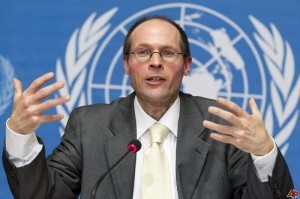
He summarized his arguments in March with a final report to the Human Rights Council, but kept on going til the end, with a really thought-provoking briefing note on government procurement. Sounds dull, I know, but reading it made me realize just how much unexplored potential there is here. I think he’s onto something.
Think about it; what area do governments have most control over? Their own spending would be high up any list, and in food, that is significant:
‘Governments spend on average 12% of their GDP on public procurement in OECD countries, and slightly less in developing countries, although estimates vary. All over the world, public authorities award contracts for food provision and food-related services for cafeterias in civil service buildings, hospitals, prisons, schools, universities, as well as social programmes such as in-kind transfers or social restaurants. For instance, the public catering sector in the UK represents some £2 billion per year (approx. US $3 billion or €3,16 billion).’
De Schutter points out that governments ‘buying social justice’ is not new – government purchasing power has been used to promote racial and gender equality in the US, South Africa, Malaysia and Europe. But the right to food has been missing from that work, and in recent times, negotiations on government procurement at the WTO and in trade agreements have got stuck in a Washington Consensus style terrain of openness, transparency and efficiency, rather than the impact in inequality and poverty.
So he proposes a truly monstrous acronym – PPPPP (pro-poor public procurement policies). Let’s call it 5P for short. Building on areas such as Africa’s ‘Home Grown School Feeding Programme’ and the World Food Programme’s Purchase for Progress scheme, De Schutter identifies (appropriately, I guess) 5 principles that should underpin any 5P approach (see table).
Brazil seems to be furthest along this road:
‘Brazil’s Act No.11, 947 of 16 June 2009 provides that a minimum of 30% of the financial resources transferred by the federal government to states and municipalities in order to implement the National School Feeding Programme (PNAE), now covering more than 49 million children, must be used to buy food sourced from family-based farms, including indigenous communities, Quilombolas (descendants of Afro-Brazilian slaves), and beneficiaries of land redistribution programmes……
The quota system established by Brazil in 2009, as part of the Zero Hunger strategy, is the first example of an innovative policy and a powerful tool for supporting family-based farms and specific vulnerable groups.’
De Schutter argues that a 5P approach has nothing to fear from the WTO – there is plenty of flexibility within the Government Procurement Agreement to address sustainable development concerns and right to food principles.
Seems to me that government procurement is something policy and advocacy types need to take much more seriously – the ground has been surrendered too easily to old school liberalizers, and it’s time to take it back. What we need to do is identify successes in making sure procurement schemes avoid ending up as ‘snouts in the trough’, as has happened many times in the past (in all countries – I’ve just been watching the Sopranos box set again, plenty of local government procurement in there). And that should take us into looking at the accountability mechanisms and governance arrangements that ensure 5P stays pro-poor.
Success may be easier to achieve at city level than national. Take the work we’ve been doing on linking farmers and urban markets in Bogota for example.
So (a) what other examples of 5P can people point to and (b) assuming he has actually left the UN, has anyone got a job that keeps Olivier pumping out ideas of this quality? He has been elected to a position on the UN Committee on Economic, Social and Cultural Rights from January 2015 – hope that gives him the platform he deserves.

Duncan Green's Blog
- Duncan Green's profile
- 13 followers





